Click on images or Charmouth Home to return back.
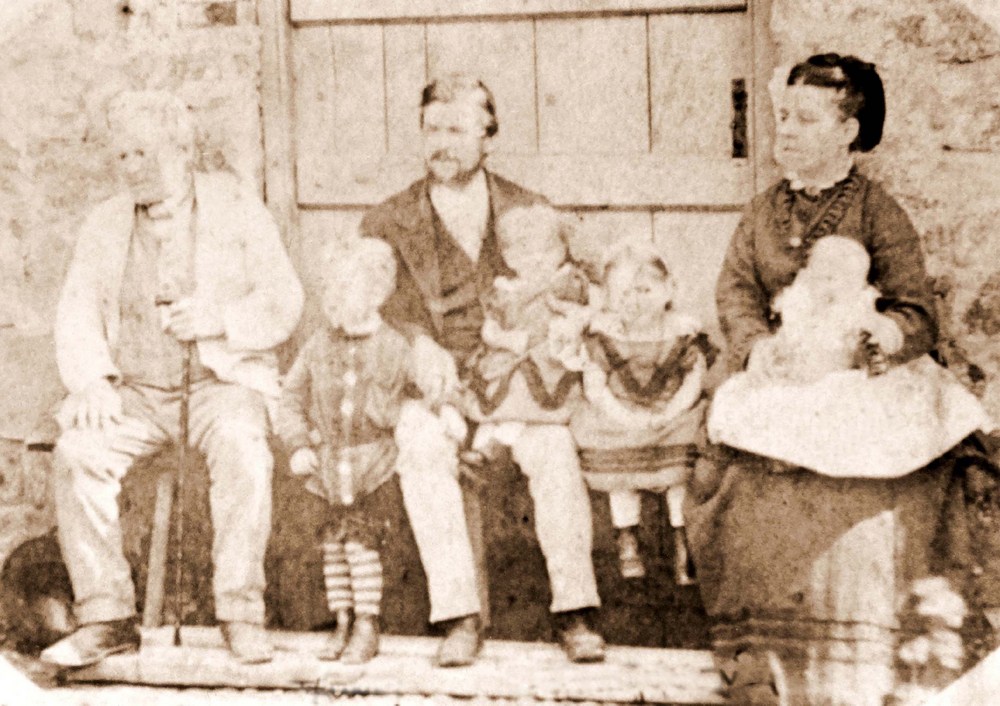
Giles Pryer, Harry jnr, Harry snr. Emma, Anne, Ellen, Leah (Harry’s Wife) in 1874
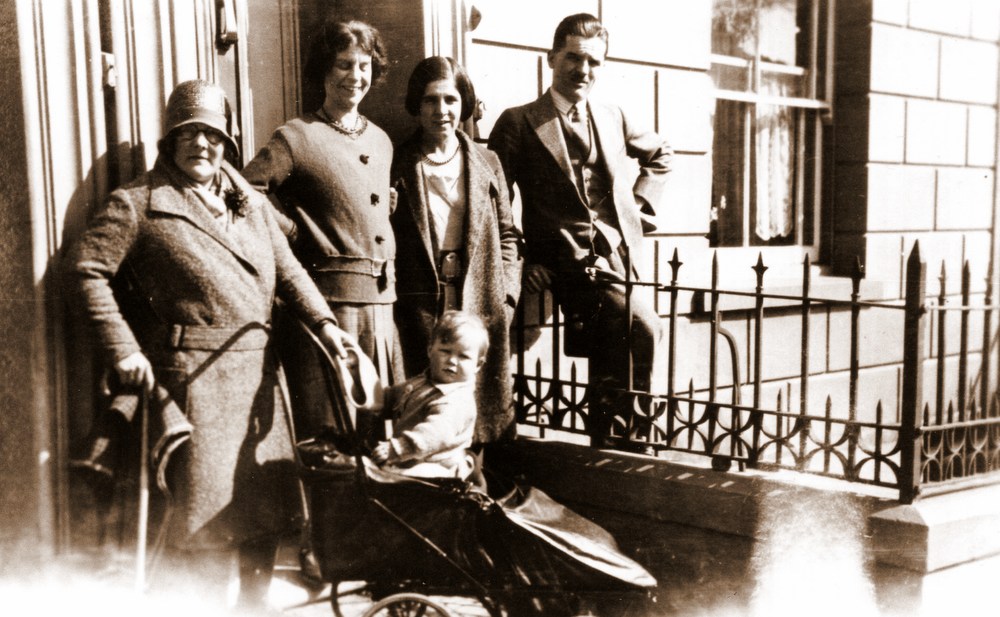
Stanley House. No. 4 Prospect Place.
The History of this house is basically that of one of Charmouth`s most successful families – The Pryers, who were to live and own it for almost a century. They left their mark on the village with a number of buildings including the Heritage Centre, Pryers Villas, at the bottom of Barrs Lane and of course Prospect Place. A dispute over the Election Results of 1842, bought Giles to Court as a witness, his testament is very revealing as follows: “ I am a Mason and Plasterer living in Charmouth about 15 years. I have some back offices and a shed behind my house. I was paying £ 12 a year rent, but bought it on 27 th May last, when it was put up for auction. I have occupied it 4 years as tenant and paid Poor, Church and Highway rates. I have a parlour, kitchen in front, two rooms over and a large lobby which had room enough for a bed to stand on and take in lodgers in the summer months ” . He would have been just 30 when he bought the freehold of his house and the subsequent ten yearly censuses show him and his wife, Elizabeth, then aged just 20 bringing up seven children there. When his neighbour, John Carter gave up his Carpentry business to open his Shop, it was Giles Pryer who was to take over and eventually buy his workshops, which is now the building occupied by “ The Pharmacy ” and the surrounding field, where the shops are today. After the 1864 fire, which is said to have started under the thatched roof in his part of the building, he had the job of rebuilding the present property. He appeared to have kept ownership of his part and on his death in 1881 passed it over to the son Harry William Pryer who remained there for the rest of his life. Harry was known by the nickname of Pussey and went on to own a large number of properties and fields in the village. These included the land on both sides of the Street where the shops are today, which were built after his death in 1931. An auction ten years before of some of his estate includes Minson ' s Common, Double Common and Sea View in Lower Sea Lane as well as a number of houses. Old Postcards of the time show his Stone Masons workshops and yard spread over the field known as Pear Close which covered the corner of The Street and Lower Sea Lane as far as Wesley Close and the Abbots House. Their House in Prospect Place has two front doors as one led to their office.
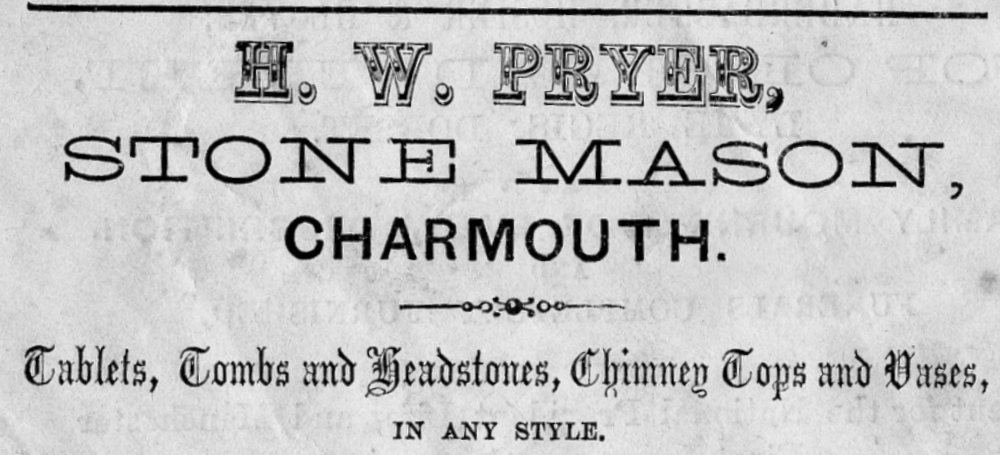
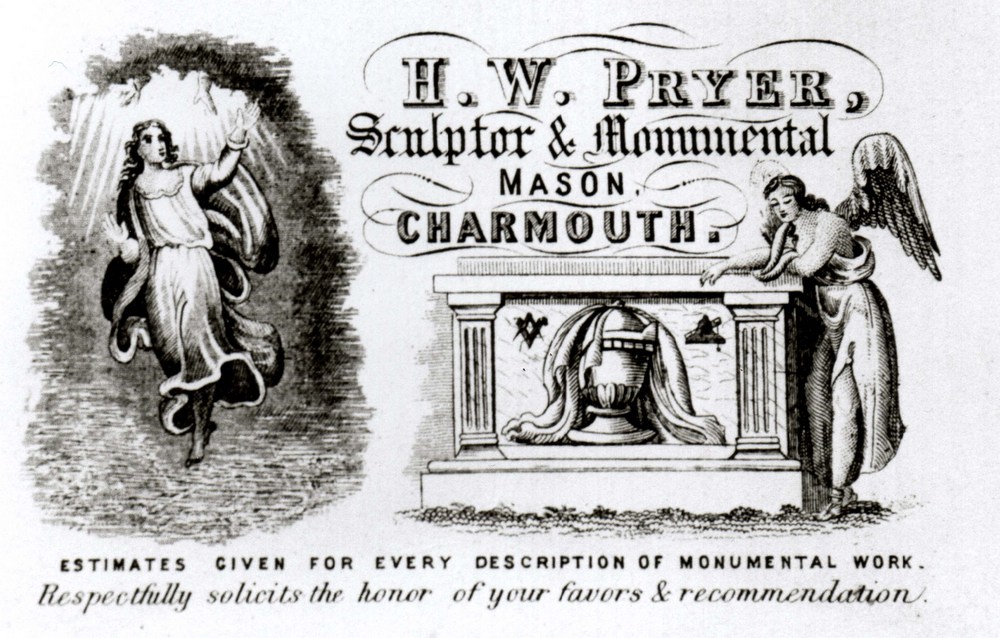
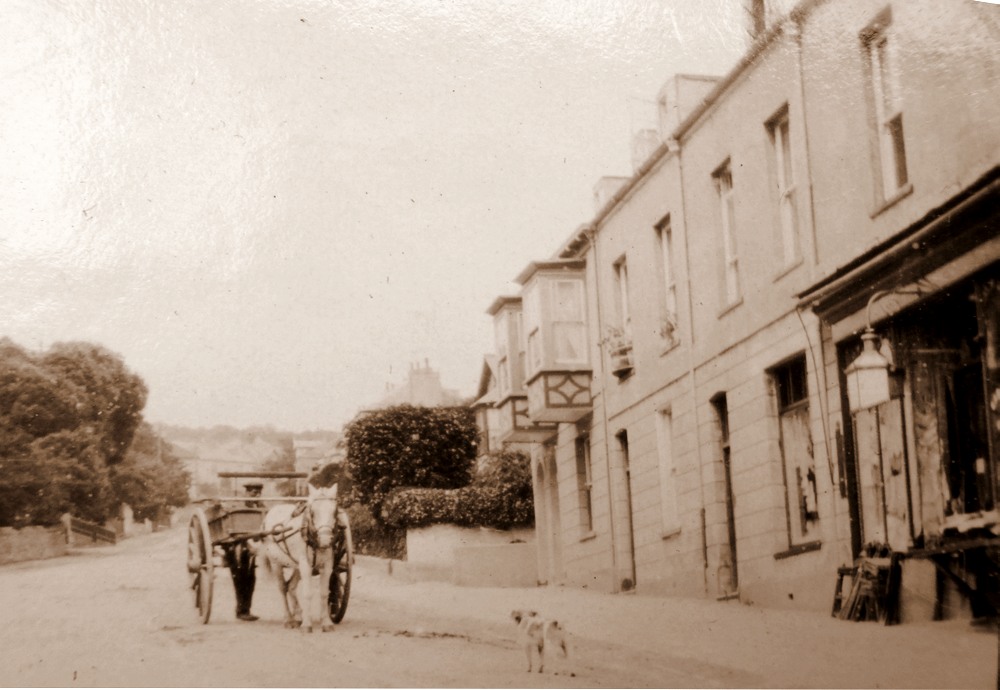
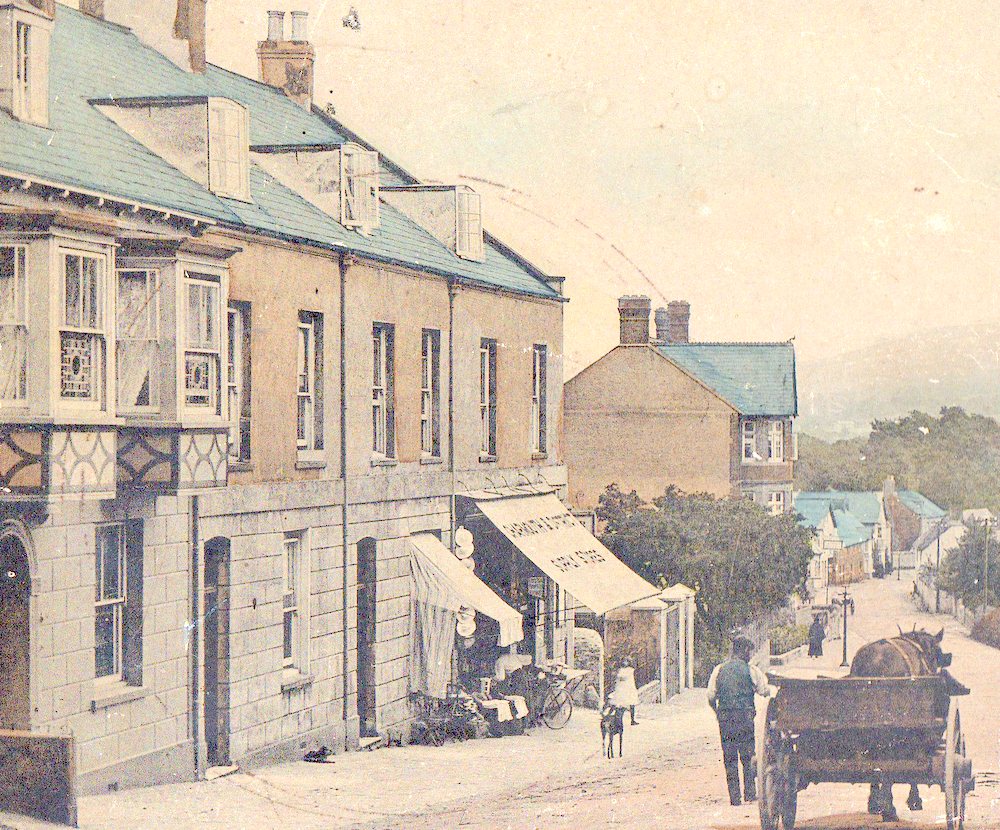
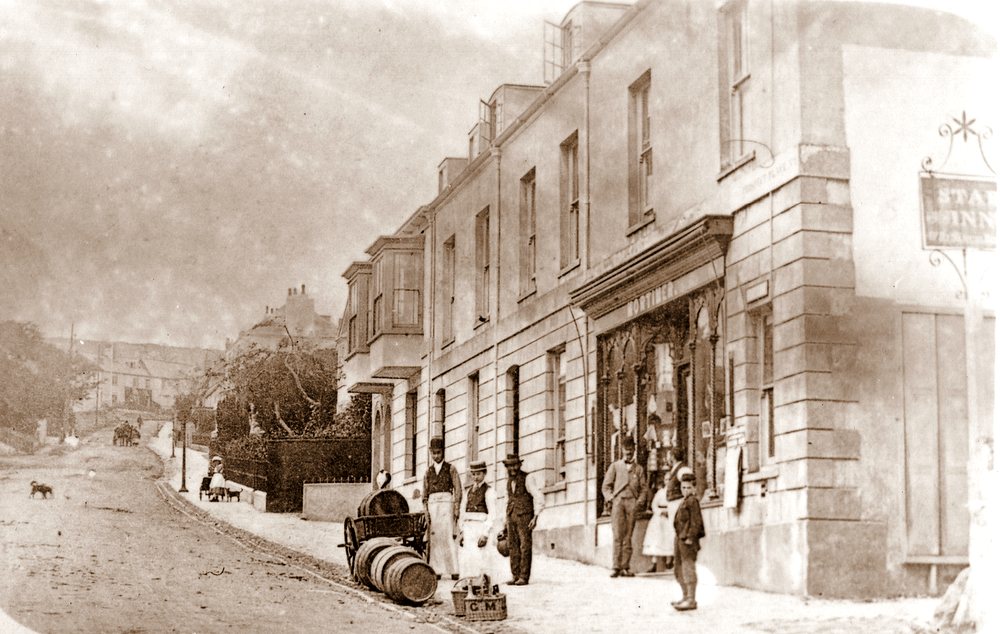
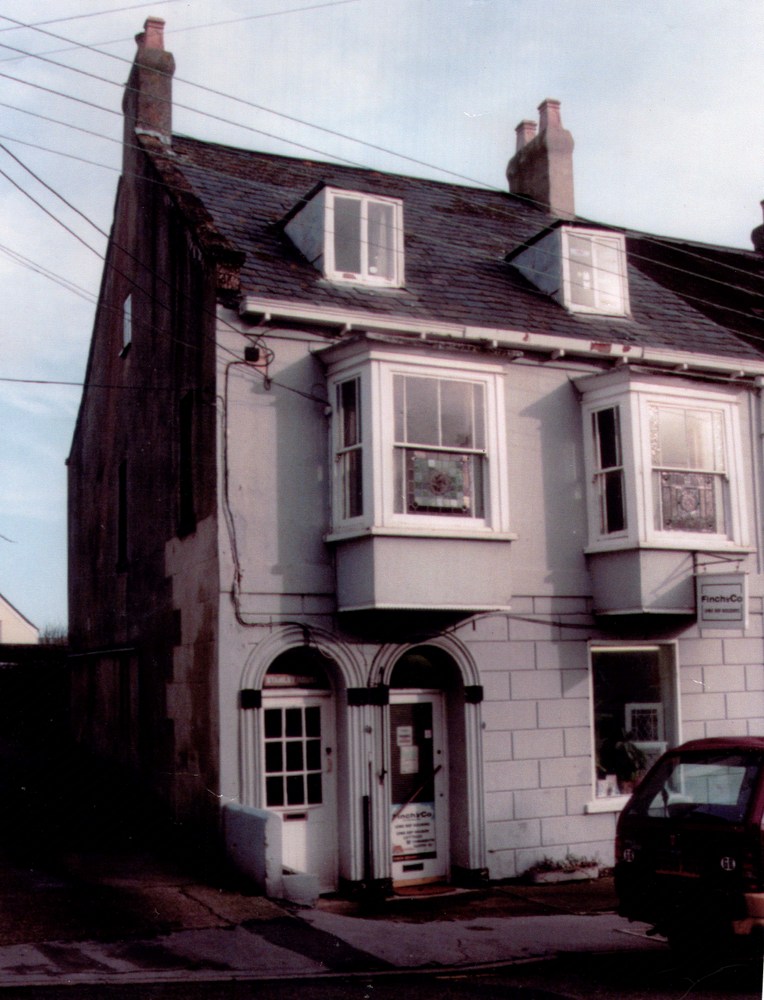
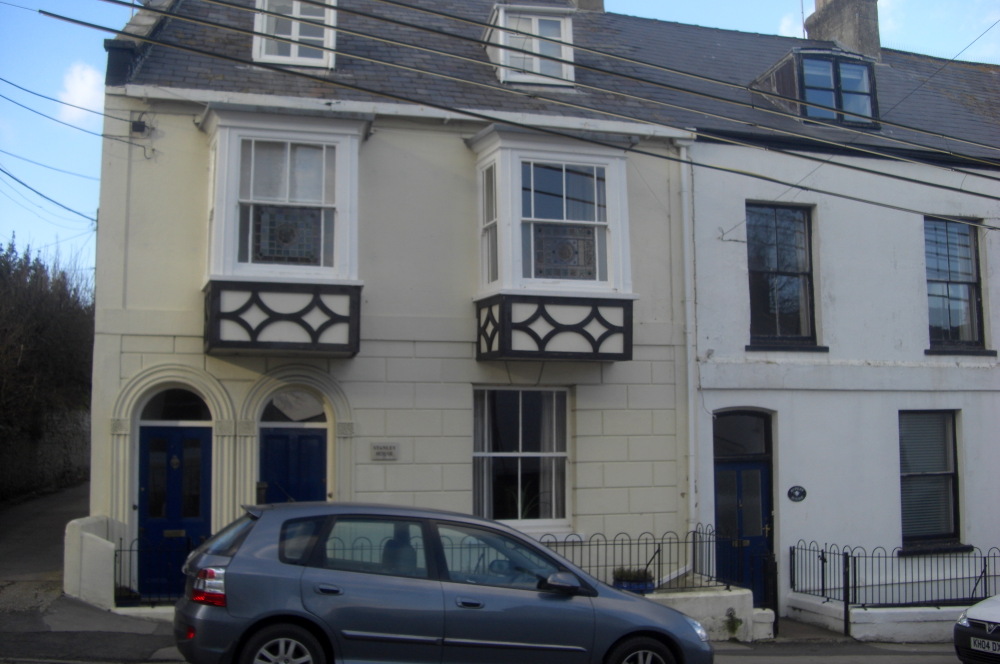
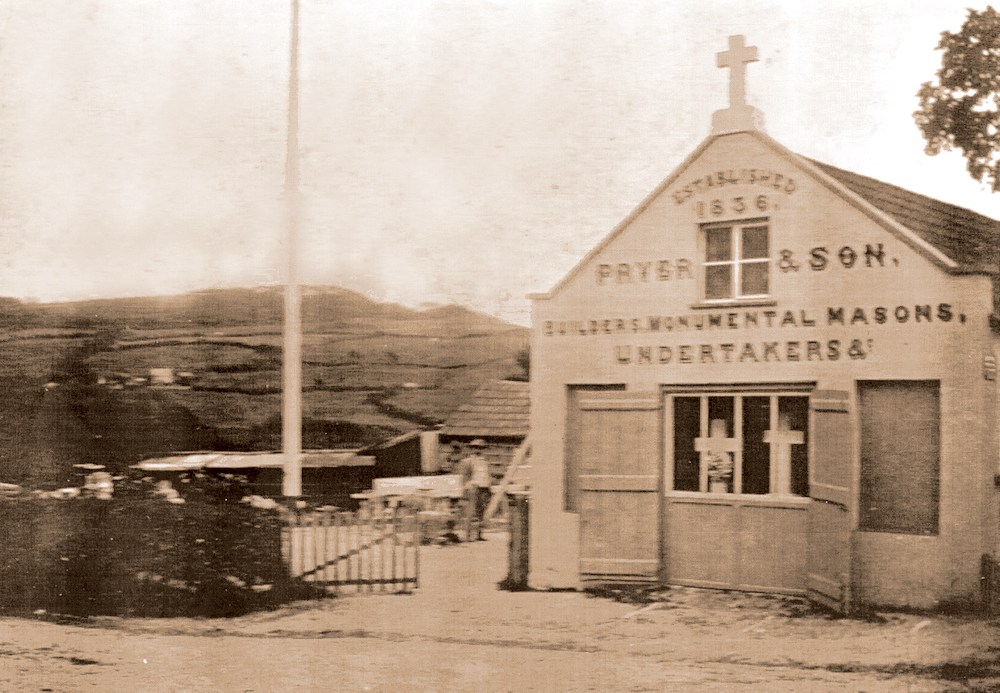
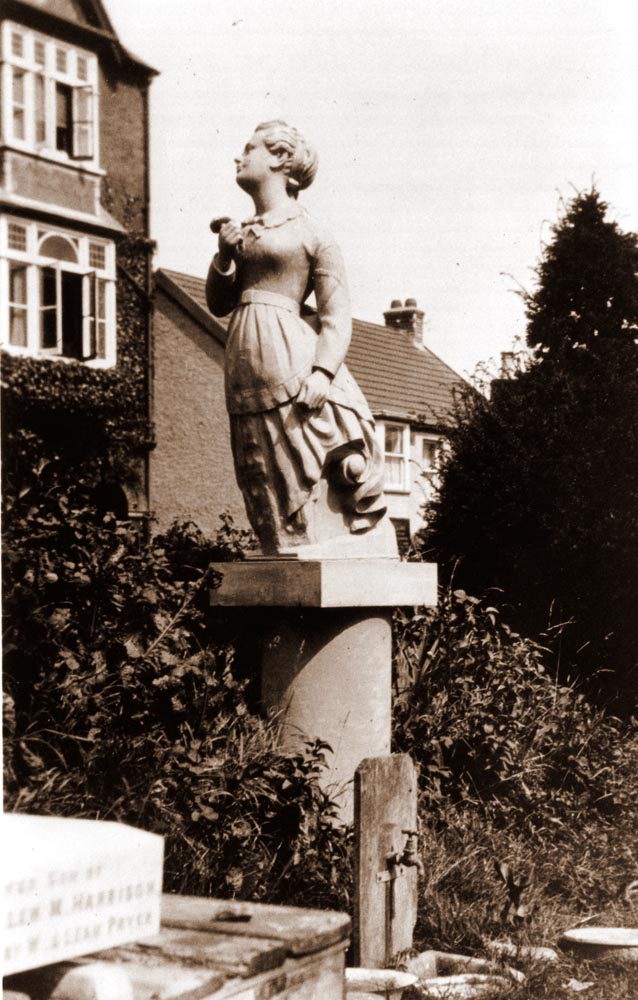
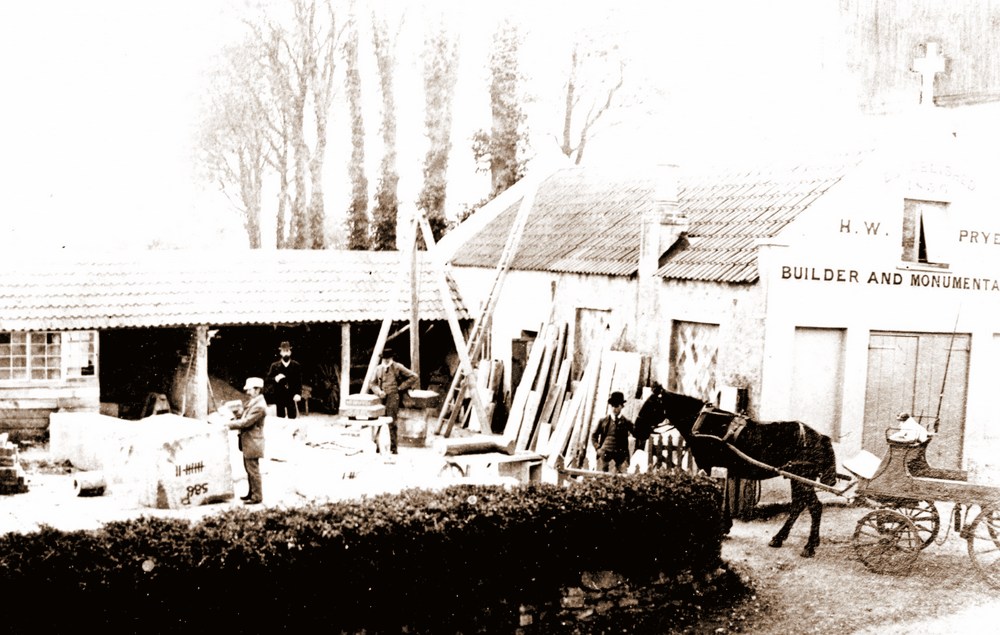
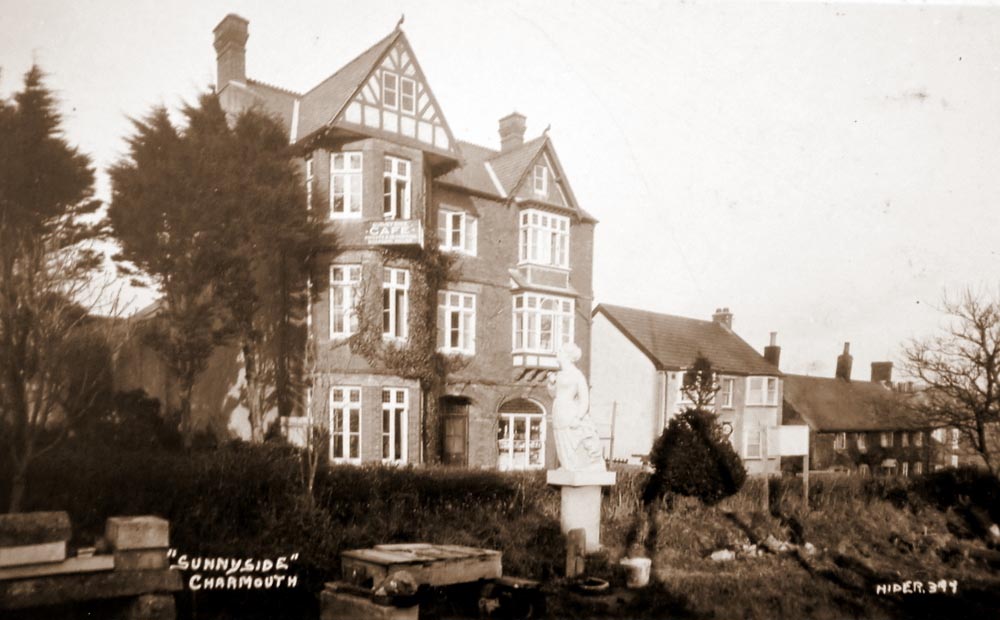
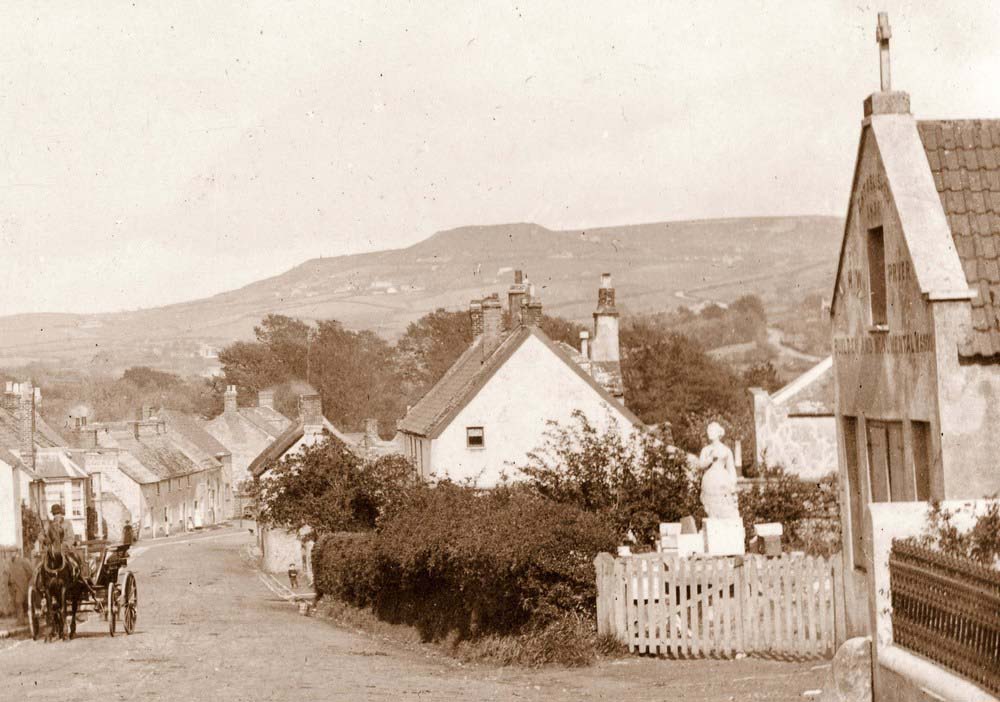
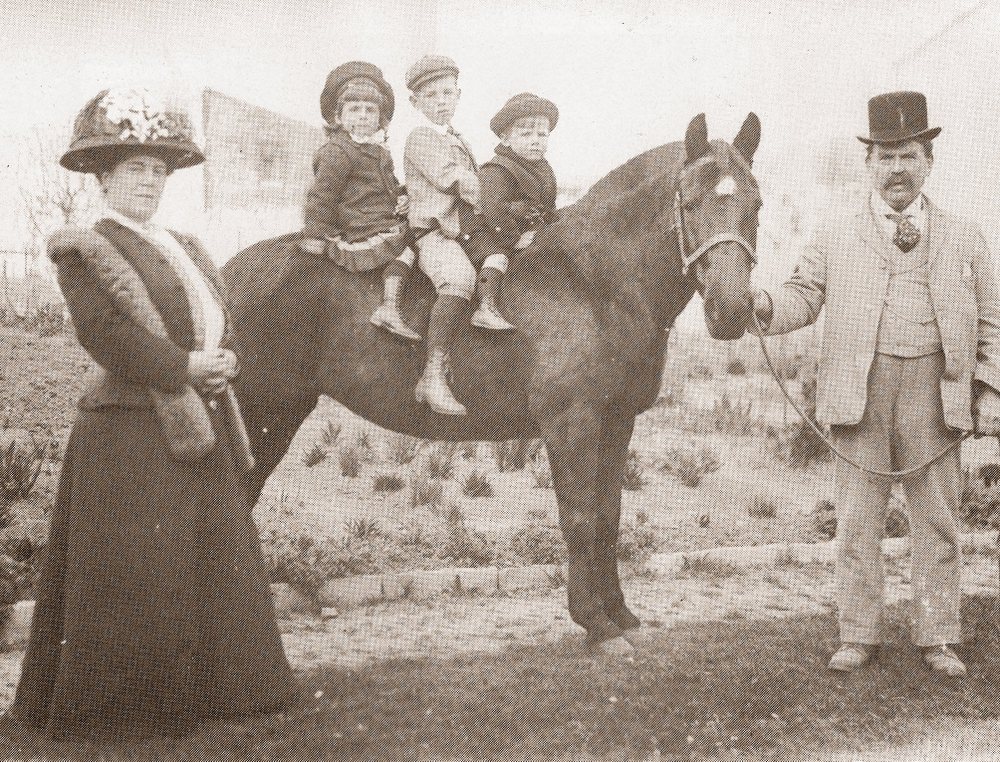
A number of the Memorials and Grave Stones is the name of the person who worked on them. He was Harry Pryer and his workshop was on the corner of The Street and Lower Sea Lane. He lived in Stanley House, near to Charmouth Stores (Nisa). He was born there in 1844, the son of Giles Pryer, who had moved into the house in 1838. Both father and son were to make their mark in the villages as builders of a number of the fine houses we have today, including the Heritage Centre, Pryers Villas, at the bottom of Barrs Lane and of course Prospect Place. A dispute over the Election Results of 1842, bought Giles to Court as a witness, his testament is very revealing as follows: “I am a Mason and Plasterer living in Charmouth about 15 years. I have some back offices and a shed behind my house. I was paying £ 12 a year rent, but bought it on 27th May last, when it was put up for auction. I have occupied it 4 years as tenant and paid Poor, Church and Highway rates. I have a parlour, kitchen in front, two rooms over and a large lobby which had room enough for a bed to stand on and take in lodgers in the summer months”.
He would have been just 30 when he bought the freehold of his house and the subsequent ten yearly censuses show him and his wife, Elizabeth, then aged just 20 bringing up seven children there. When his neighbour, John Carter gave up his Carpentry business to open his Shop, it was Giles Pryer who was to take over and eventually buy his workshops, which is now the building occupied by “The Pharmacy” and the surrounding field, where the shops are today. After the 1864 fire, which is said to have started under the thatched roof in his part of the building, he had the job of rebuilding the present property. He appeared to have kept ownership of his part and on his death in 1881 passed it over to the son Harry William Pryer who remained there for the rest of his life. Harry was known by the nickname of Pussey and went on to own a large number of properties and fields in the village. These included the land on both sides of the Street where the shops are today, which were built after his death in 1931. An auction ten years before of some of his estate includes Minson ' s Common, Double Common and Sea View in Lower Sea Lane as well as a number of houses. Old Postcards of the time show his Stone Masons workshops and yard spread over the field known as Pear Close which covered the corner of The Street and Lower Sea Lane as far as Wesley Close and the Abbots House. Their House in Prospect Place has two front doors as one led to their office.